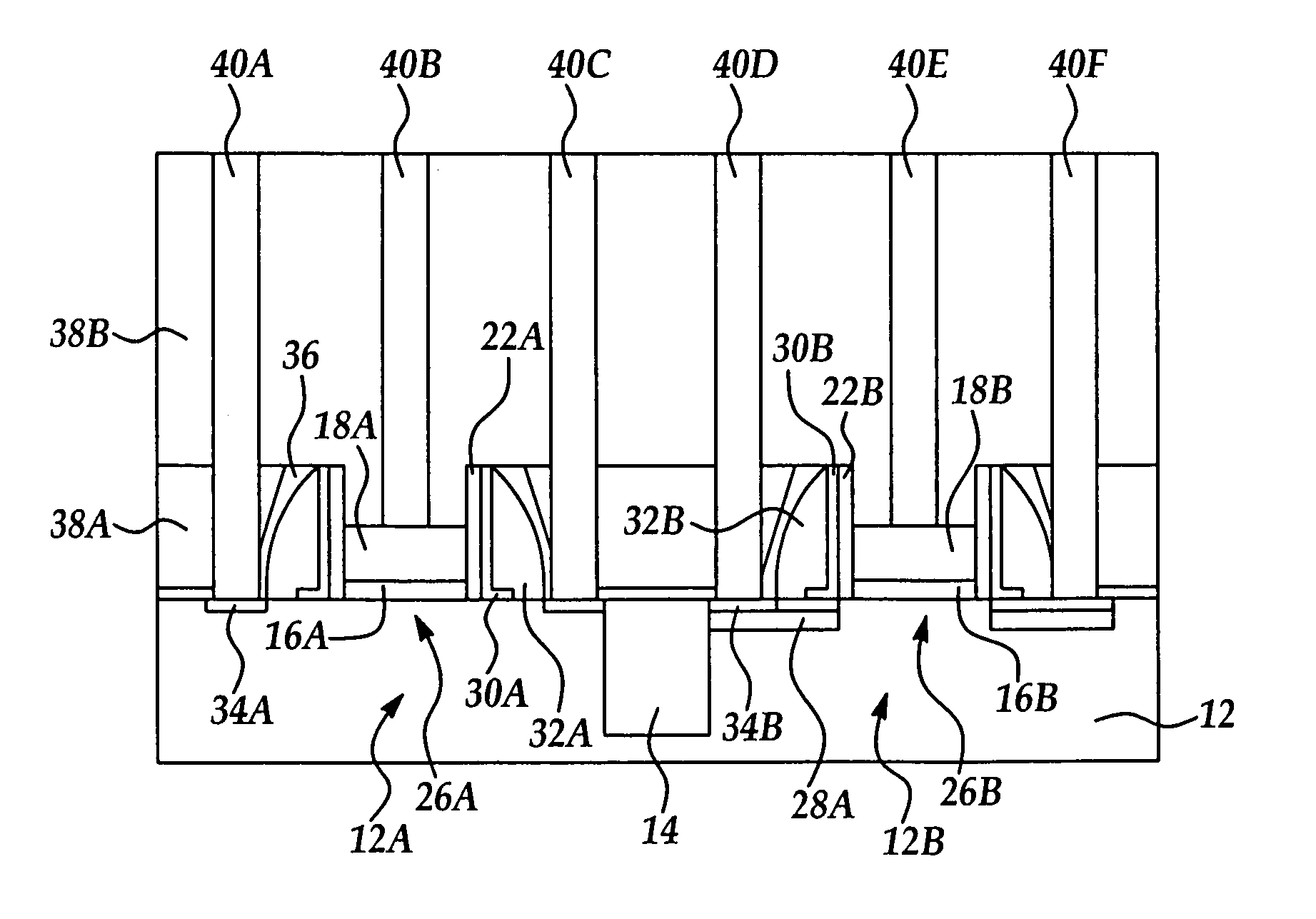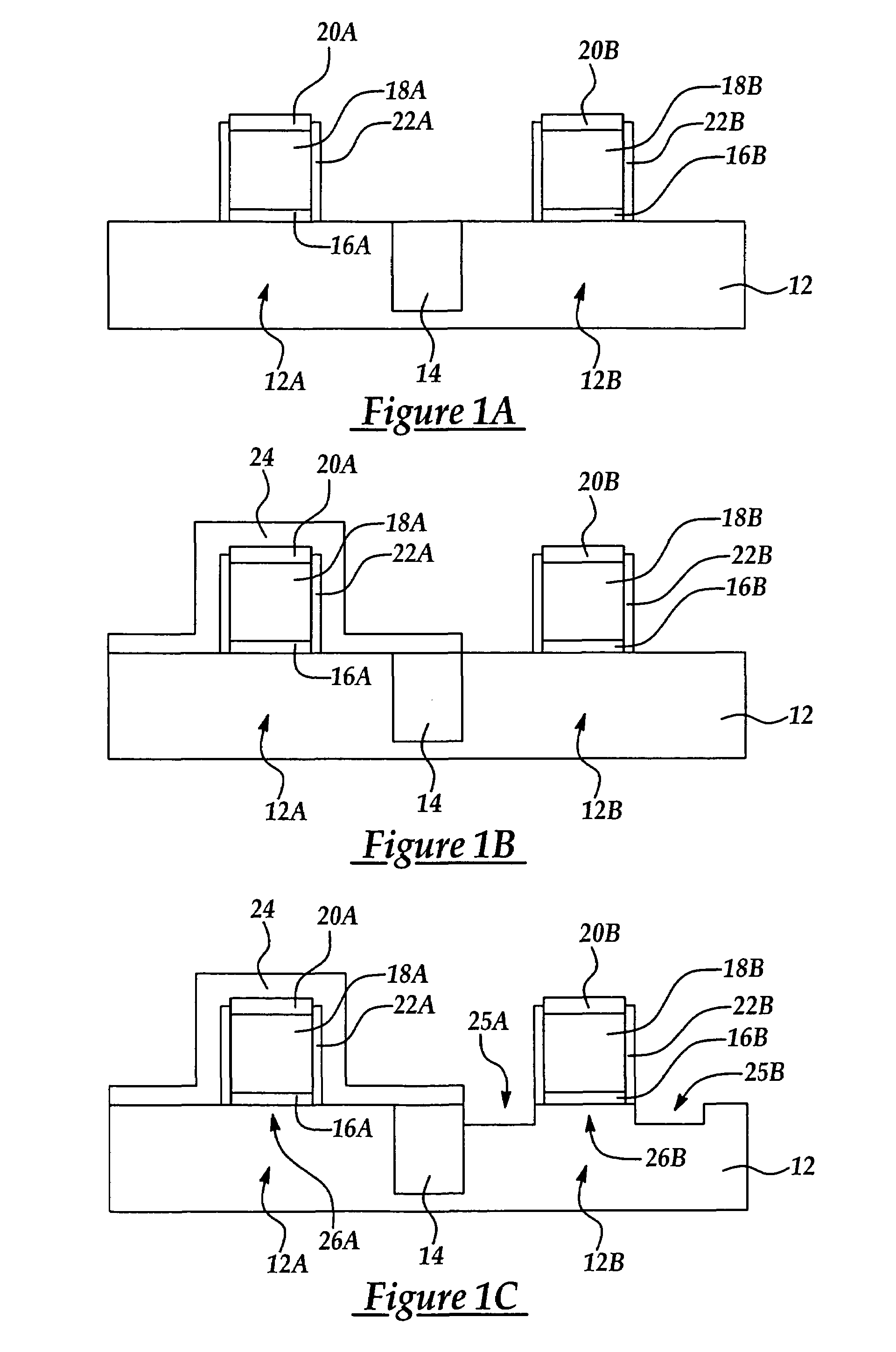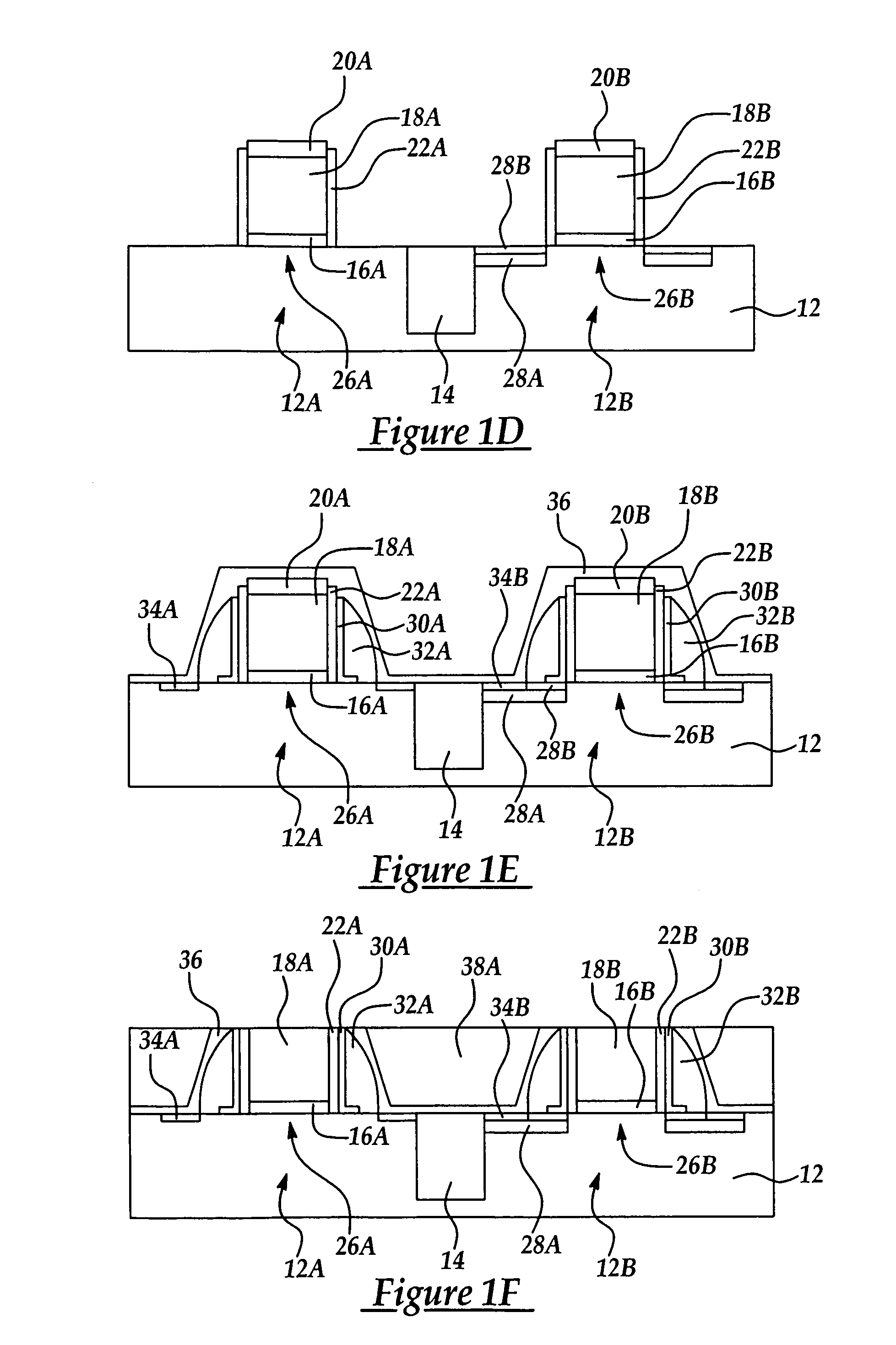Strained channel CMOS device with fully silicided gate electrode
a gate electrode and strained channel technology, applied in the direction of basic electric elements, semiconductor devices, electrical equipment, etc., can solve the problems of increasing the critical dimension of the device, affecting the drive current of the gate sheet, and increasing the delay time of signal propagation
- Summary
- Abstract
- Description
- Claims
- Application Information
AI Technical Summary
Benefits of technology
Problems solved by technology
Method used
Image
Examples
Embodiment Construction
[0014]Although the method of the present invention is explained with reference to exemplary NMOS and PMOS MOSFET devices, it will be appreciated that aspects of the present invention may be applied to the formation of any MOSFET device including dual gate or twin gate CMOS inverters where a fully silicided gate electrode is formed to reduce a gate electrode resistance and avoid a poly-depletion effect. It will be appreciated that additional benefits are realized by forming a strained channel region to improve charge carrier mobility, both processes advantageously improving device performance including drive current (Idsat) and device speed.
[0015]Referring to FIGS. 1A–1H in an exemplary process flow for forming the fully silicided gate electrode CMOS structures of the present invention, are shown cross-sectional schematic views of a portion of a semiconductor wafer at stages of an exemplary production process.
[0016]For example, referring to FIG. 1A, is shown a semiconductor substrate...
PUM
 Login to View More
Login to View More Abstract
Description
Claims
Application Information
 Login to View More
Login to View More - R&D
- Intellectual Property
- Life Sciences
- Materials
- Tech Scout
- Unparalleled Data Quality
- Higher Quality Content
- 60% Fewer Hallucinations
Browse by: Latest US Patents, China's latest patents, Technical Efficacy Thesaurus, Application Domain, Technology Topic, Popular Technical Reports.
© 2025 PatSnap. All rights reserved.Legal|Privacy policy|Modern Slavery Act Transparency Statement|Sitemap|About US| Contact US: help@patsnap.com



